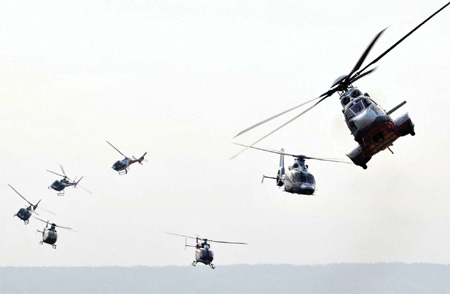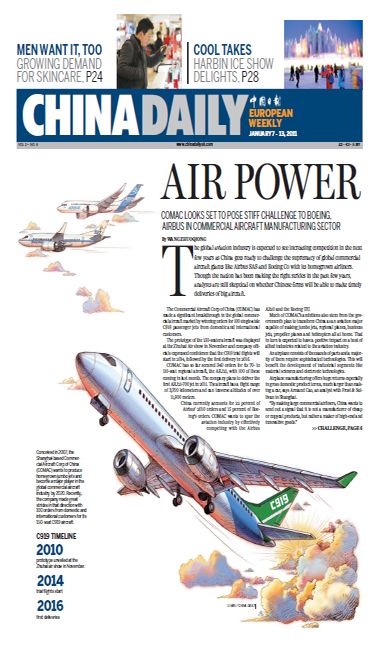On the rise
Updated: 2011-01-07 11:21
By Wang Zhuoqiong (China Daily European Weekly)
|
The EC175-Z15, the first helicopter developed under cooperation between China and France, makes its maiden flight in Marseilles, France. Provided to China Daily |
European helicopter makers eye large Chinese market
China could become the world's largest market for helicopters in the next two decades, creating tremendous opportunity for European manufacturers.
The country will likely need more than 10,000 helicopters by 2020 alone, according to the China National Aero-Technology Import and Export Corporation.
China's opening-up of its low-altitude airspace will also help fuel the growth of the market.
A circular issued by the State Council and the Central Military Commission on Nov 14 said China will gradually open part of its low-altitude airspace - altitudes lower than 1,000 meters - for private flights to promote the country's general aviation sector, or the use of aircraft for purposes other than those of commercial airlines, the military and the police.
Previous regulations placed low-altitude airspace under strict control throughout China, forcing private planes to apply in advance for flight approval, which often took a long time.
As a result of this policy, a sharp contrast has emerged in China between the huge size of its population and the low number of aircraft used for general aviation.
Low-altitude airspace in China includes anything flying below 4,000m. These include helicopters, small aircraft like Diamond airplanes for training purposes, as well as small airplanes for cargo purposes.
The most direct beneficiaries of the opening-up of the low-altitude airspace are the helicopter users, says Bruno Boulnois, CEO of Eurocopter China.
"It allows people with easy and flexible access to connect cities," he says. "If you have to travel up to 500 kilometers, the fastest way is to go by helicopter, from taking off directly from where you are and landing where you need to go."
Market analysts forecast that the country will need more than 450 helicopters by 2015 before the opening-up of the low-altitude space.
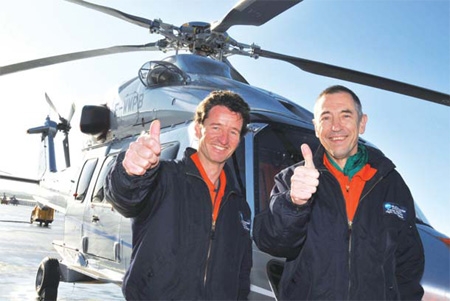
Flight personnel celebrate the maiden flight of the EC175-Z15 in Marseilles, France. Provided to China Daily |
Eurocopter China's products have been used for corporate and private purposes as well as for the public security sector. Among them, oil and gas activities that take passengers to offshore platforms will continue to grow. There were 40 helicopters in China in 2010, with 22 from the company.
Helicopters for public security will also be on the rise, including those for the police and firefighters.
"The existing fleet has between 15 and 20 helicopters. In the next five years, it will easily reach 100," Boulnois says
"We are glad China has opened the low-altitude airspace," says a senior management from Italian helicopter maker AgustaWestland. The company has been responsible for 98 percent of the helicopters for law enforcement in China and has set up maintenance stations and a joint venture in the country.
"We provide training and maintain our products, so that they feel they are taken care of by us," he says.
Eurocopter says search and rescue operations are also expected to require more helicopters, particularly in South China where thunderstorms are common.
Disaster relief and rescue and medical use are part of the new growth areas for the industry, he says. Helicopters have played a key role in efficient disaster relief and rescue operations. In the next five years, China needs at least 100 helicopters for observation and relief of natural disasters.
Helicopters can also act as flying ambulances, with a demand of 50 in the next five years to cater to highways where accidents can occur.
The market for aircraft for private and corporate use can grow to a market of 100 helicopters, depending how fast the low-altitude airspace can open and how free a helicopter is able to fly within it. It still takes three to five days to get approval for these aircraft to fly, compared to the international standard of one hour.
For business executives, flying a helicopter is like driving a car. "Nobody plans when to drive a car. The same thing applies to the helicopter," Boulnois says. "It has to be a very quick decision. And that becomes our biggest challenge."
The other challenge for the new market is the shortage of well-trained pilots and technicians. The company predicts a demand for 700 new pilots in China, double the current number of trained pilots available.
"When you start from scratch, it takes a year and a half to become a qualified pilot to fly helicopters," says the official with AgustaWestland whose company set up a joint venture in Jiangxi province to manufacture helicopters with AVIC's Changhe Aircraft Industries Group in 2005.
When asked whether China's rise has heated up competition with European aviation manufacturers, the official says it was actually a business opportunity for foreign players.
"If China wants to become an aviation giant, it will," he says.
"They have all the possibilities in the world. We want to be part of the Chinese system and sell and produce in China. It is after all the biggest market. You cannot do it from the outside, you need to do it from the inside."
Paper's Digest

Fresh start
China has an enormous stake in the stability and prosperity of the EU, the largest market for its exports.
Tuning into FM
Conference calls
Found in translation
Specials
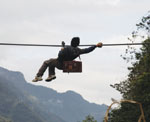
General practice
Country doctors work in trying conditions to bring care to people in the remotest of regions.

Reading pleasure
Whatever genre you fancy, these English-language book titles of 2011 are sure to delight.
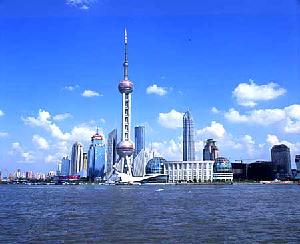
Favorite Cities
Foreigners picked the most attractive Chinese cities, with Beijing topping the list, followed by Shanghai.
